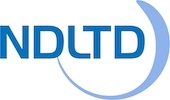
- About
-
The Global ETD Search service is a free service for researchers
to find electronic theses and dissertations. This service is
provided by the
Networked Digital Library of Theses and Dissertations.
Our metadata is collected from universities around the world. If you manage a university/consortium/country archive and want to be added, details can be found on the NDLTD website.
Search results
Showing 1 to 10 of 664 (0.131 seconds)Spelling suggestions: "subject:"forminformation managemement"" "subject:"forminformation managementment""
| 1 |
The development and dissemination of soft systems methodologyForbes, Paul January 1989 (has links)
No description available.
|
| 2 |
Portable datafiles in the construction supply chainMarsh, Laurence January 1998 (has links)
No description available.
|
| 3 |
A sublanguage of English for database query in a managerial environmentBurton, Alan January 1991 (has links)
No description available.
|
| 4 |
Enhancing Security in 802.11 and 802.1 X Networks with Intrusion DetectionPattam, Shoban 20 January 2006 (has links)
The convenience and low cost of 802.11-based Wireless Local Area Networks (WLANs) complemented with 802.1 X authentication has led to widespread deployment in the consumer, industrial and military sectors. The combination of wireless signals radiating further than the intended coverage area, flaws in 802.11's basic security mechanisms and vulnerabilities found in 802.1 X have been widely publicized. Military bases and navy ships are open targets for wireless attacks. Wireless Intrusion Detection System (WIDS), provides an additional (external) layer of security by combining intrusion detection, fire walling, packet filtering and determining the physical location of the intruder.
|
| 5 |
Electronic Information Management in PhysicsEberhard R. Hilf 20 November 1995 (has links)
No description available.
|
| 6 |
Applying Marchand’s Information Orientation Theory to Sigma Kudos—an Information Product Companyke, yuan January 2011 (has links)
Marchand, Kettinger and Rollins’s (2001) definition of Information Orientation gave us an overall understanding about company’s information management. Different from Market Orientation and Customer Orientation etc., Information Orientation Theory focuses on study of how interaction of people, information and technology affect business performance. It pursues to establish an infrastructure of information technology application capabilities within a business organization to achieve effective information use and business performance improvement. In this study, we are applying Marchand’s Information Orientation Theory to the information technology application system of the Sigma Kudos, an Information Logistics Company by using Case Study methodology. We learnt that Marchand’s Information Orientation theory and its entities can be used perfectly to exam and measure the information management capability of the company. During the study, we find out many interesting aspects which information product companies need to consider about. Among of them, one aspect is the main finding from this study that we integrate resource and vision/strategy to the Information Orientation Theory as they are also the key areas that have an effective impact to a company’s business performance.
|
| 7 |
Information technology architecture and related strategic factors supporting business advantage.Sissing, Donovan. January 2007 (has links)
<p>" / Information Technology (IT) architecture is not restricted to technology, but may also address the views of business activities / their processes / data sets and information flows / applications and software / and technology. The objective of this study is to understand the role of IT Architecture and related factors that support competitive business advantage. This study investigates the null hypothesis: IT architecture enhances the competitive advantage of business. This study sets out to explore IT architecture and strategic factorsthat support business advantage. The study findings indicated that business advantage is supported by a sound architecture, by IT and business alignmentand by the enablers of organisations..." / </p>
|
| 8 |
Tradable information function in government organisations : a cross cultural studyAbd Hadi, Zakaria January 2002 (has links)
No description available.
|
| 9 |
Information technology architecture and related strategic factors supporting business advantage.Sissing, Donovan. January 2007 (has links)
<p>" / Information Technology (IT) architecture is not restricted to technology, but may also address the views of business activities / their processes / data sets and information flows / applications and software / and technology. The objective of this study is to understand the role of IT Architecture and related factors that support competitive business advantage. This study investigates the null hypothesis: IT architecture enhances the competitive advantage of business. This study sets out to explore IT architecture and strategic factorsthat support business advantage. The study findings indicated that business advantage is supported by a sound architecture, by IT and business alignmentand by the enablers of organisations..." / </p>
|
| 10 |
Information technology architecture and related strategic factors supporting business advantageSissing, Donovan January 2007 (has links)
Magister Commercii (Information Management) - MCom(IM) / Information Technology (IT) architecture is not restricted to technology, but may also address the views of business activities; their processes; data sets and information flows; applications and software; and technology. The objective of this study is to understand the role of IT Architecture and related factors that support competitive business advantage. This study investigates the null hypothesis: IT architecture enhances the competitive advantage of business. This study sets out to explore IT architecture and strategic factorsthat support business advantage. The study findings indicated that business advantage is supported by a sound architecture, by IT and business alignmentand by the enablers of organisations. / South Africa
|
Page generated in 0.1454 seconds